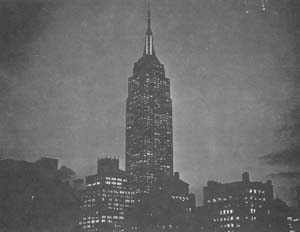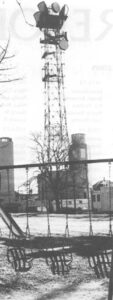Paul Brodeur
- 1978

Fellowship Title:
- Radio Frequency and Microwave Radiation
Fellowship Year:
- 1978
Static on the Microwave Front
During the first six months of 1978 the American people have reacted to the recently perceived health threat posed by microwave and radio frequency radiation with unprecedented vigor and determination. From one end of the country to the other, individual citizens and citizens’ groups have not only mounted a powerful series of protests against the indiscriminate irradiation of the general population, but are openly challenging the right of the Department of Defense, the Federal Aviation Administration, the Federal Communications Commission, the telecommunications industry, and other segments of the military-electronics industry complex to continue the practice of installing radiation-emitting devices without regard for the long-term biological consequences that may ensue from their use. Many of these protests and challenges have been reported by the press, and the news coverage has, in turn, evoked response from the political sector as well as from responsible health officials at various levels of the municipal, state, and federal governments. Not surprisingly, such publicity has also provoked nervous denial from some quarters of the military-electronics complex, and stony silence from others.
1978 Microwave Review
The Old Song and Dance Routine, or, When in Trouble, Blame the Press It was a year of frantic scrambling and squirming on the part of officials in the Department of Defense, the Department of State, the Congress, and the various federal agencies, who were either responsible for protecting the public health from the adverse biological effects of microwave and radio frequency radiation, or who had become embroiled in the controversy that was sweeping the nation. Indeed, there were times in 1978 when it seemed that virtually everyone involved in the microwave affair had taken pen to paper to put himself on the side of the angels. As might be expected, such subjectively motivated scribbling gave birth to the usual litter of self-serving reports, righteous statements, and vague denials, which contained the usual amount of official fretting that the press might be unduly alarming the public about the hazard. It was, of course, the kind of song-and dance response which the public should by now have come to expect whenever officialdom finds itself confronted by

From the Top of the Empire State Building, High Above New York
Last June, when the Bureau for Radiation Control of the New York City Department of Health announced its intention to establish a standard for environmental exposure to radio frequency and microwave radiation, a collective shudder passed through the radio and television broadcast industry. As well it might. The Bureau’s proposed standard called for a radiation power level of no more than 50 microwatts per square centimeter “in unregulated or uncontrolled areas available to men, women and children by virtue of residence, recreation, or general public access.” Now, 50 microwatts is not only a power level 200 times less than the level presently considered safe by the federal government for workers and people in the general population, it is also a power level that can commonly be found in the vicinity of FM radio and TV transmitters from one end of the United States to the other. For example, in its ongoing survey of broadcast radiation levels in American cities, the federal Environmental Control Agency has measured 66 microwatts in the Sears Tower, in Chicago; 97

On the Beach
Early last winter, two well-attended and widely reported meetings took place in North Truro and in Sandwich, Massachusetts-towns located at either end of Cape Cod-between citizens concerned about the health hazards of microwave radiation and representatives of the United States Air Force. At both meetings, the Air Force representatives were asked to state what data they possessed to support their contention that radiation emanating from the gigantic new PAVE PAWS radar at Otis A.F.B., in Sandwich, and from the three conventional radars at the North Truro Air Force Station, would not harm the health of people, particularly children and pregnant women, who might be exposed to it over a period of time. The Air Force representatives could not answer this question because they had little or no data to support their contention. Indeed, they spent a good deal of time at both, meetings trying to explain why they had ignored a significant amount of data indicating that there may be extremely serious long-term health problems associated with chronic exposure to radar. Radar domes on the

The Public Fights Back: Static on the Microwave Front
During the first six months of 1978, the American people have reacted to the recently perceived health threat posed by microwave and radio frequency radiation with unprecedented vigor and determination. Last April, it was learned that the highest levels of broadcast radiation so far measured by the Environmental Protection Agency in any city in the United States had been found in Portland. A reading of one hundred and fifty microwatts per square centimeter was taken at the base of a radio transmitter tower in Healy Heights, a middle class neighborhood located in the city’s West Hills section, in the midst of a large complex of radio and television transmitting towers. The residents of Healy Heights were quick to express concern about the possible adverse health effects of such a level of radiation. One hundred and fifty microwatts is, after all, one hundred and fifty times what is considered a safe level of exposure for the general population in the Soviet Union and in other Eastern European countries. It is also a level considerably higher than
